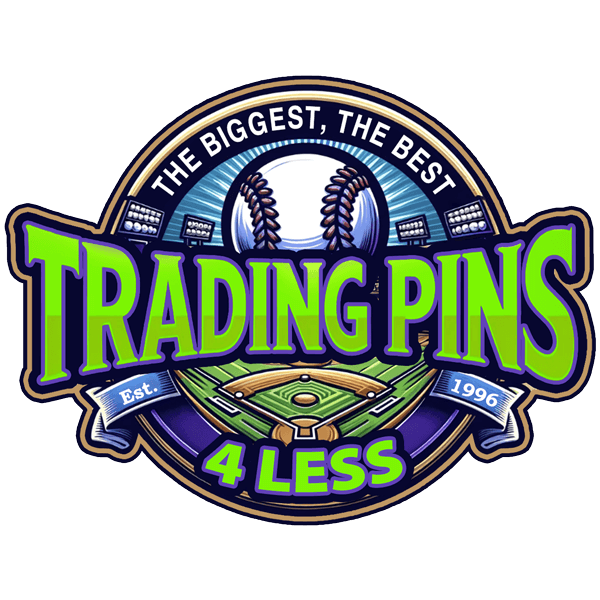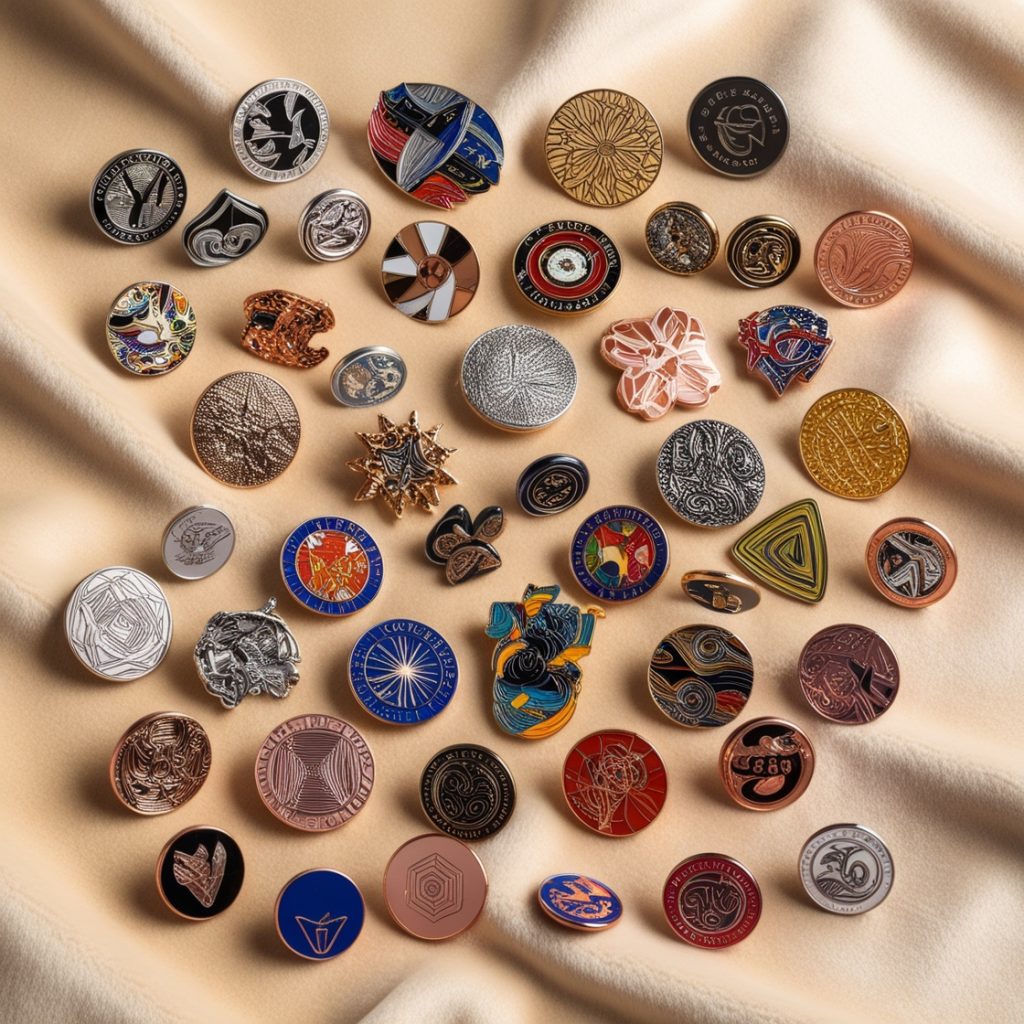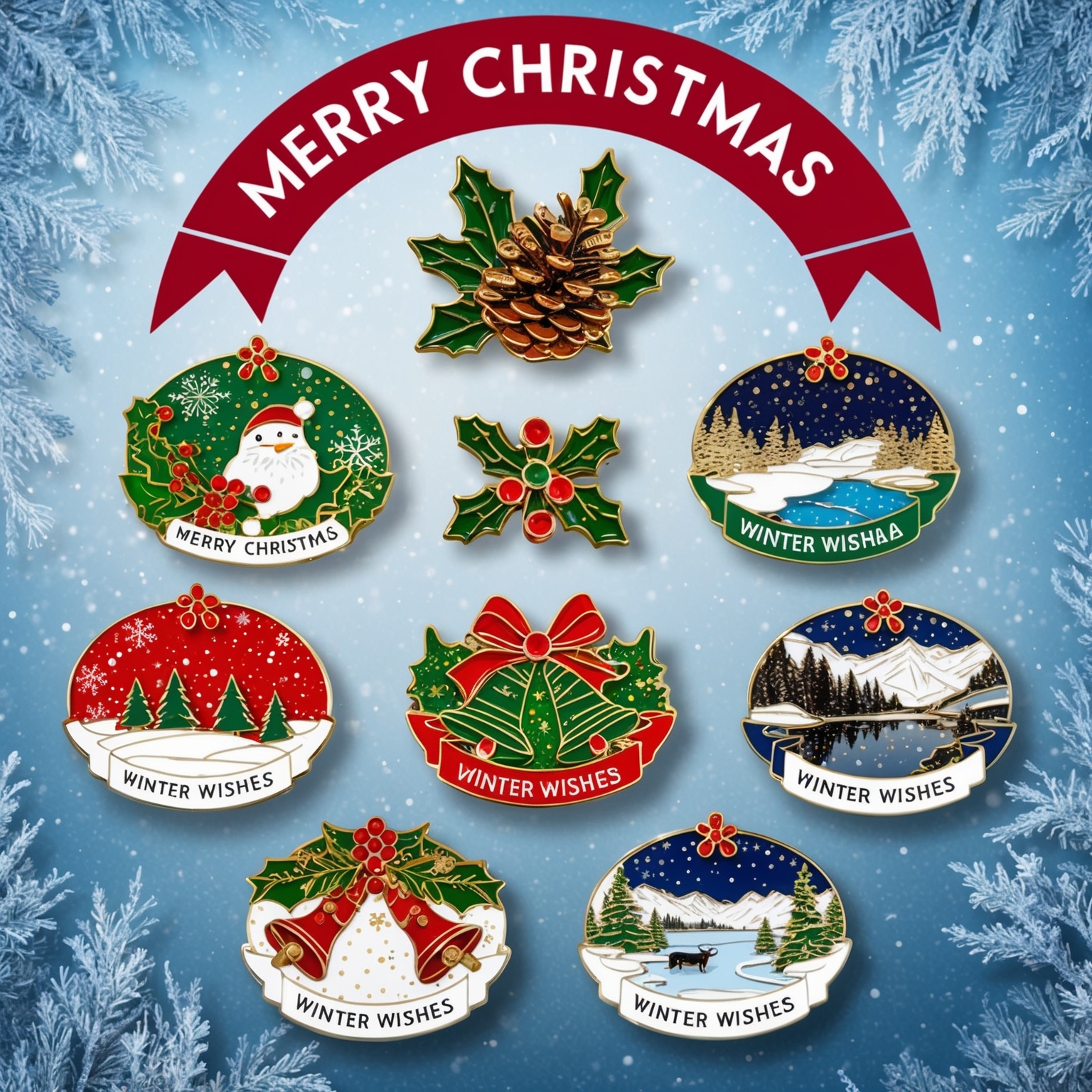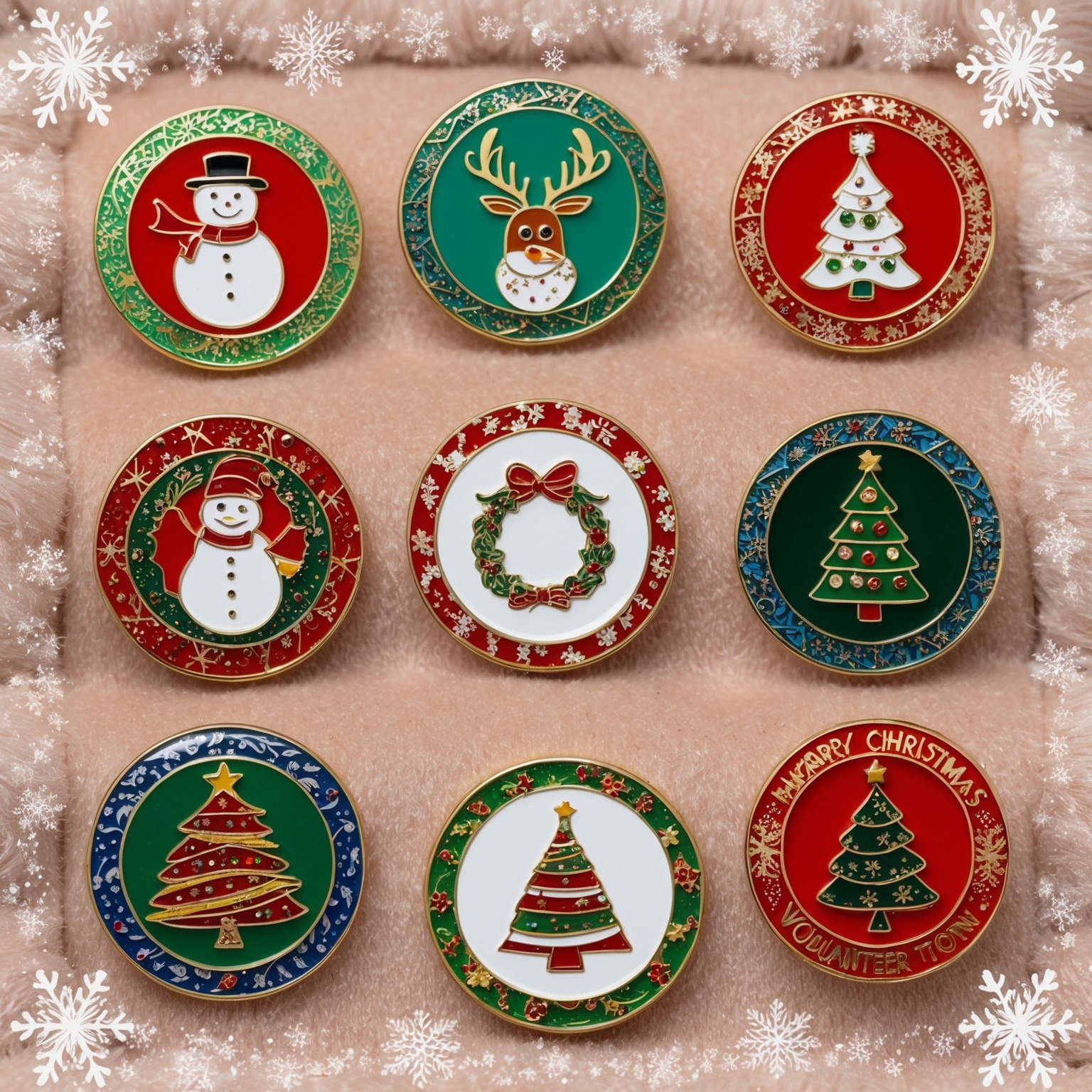Imagine walking into a bustling convention, the air filled with excitement and the clinking sound of pins being traded. Enthusiasts of all ages gather around, proudly displaying their collections and eagerly seeking new additions. Pin trading is not just a hobby; it’s a vibrant community and a way to connect with others who share your passion. But where do you start if you’re new to the world of pin trading? Let’s explore the essential tips and tricks to help beginners dive into the fascinating world of lapel pin trading.
Pin trading is a fun and engaging hobby that has captivated people for decades. Whether you’re interested in collecting pins from your favorite sports teams, theme parks, or events, getting started can feel overwhelming. This guide will provide you with essential tips and tricks to navigate the world of pin trading, address common concerns, and set you on the path to becoming a successful pin trader.
Understanding the Basics of Pin Trading
What is Pin Trading?
Pin trading is a popular hobby that involves collecting and exchanging decorative pins, typically worn on lapels, hats, or lanyards. It’s a social activity that allows enthusiasts to connect, share their interests, and build unique collections. Pin trading is particularly popular at sporting events, theme parks, and conventions, where fans gather to swap pins and engage in friendly negotiations.
Types of Lapel Pins:
To start your pin trading journey, it’s important to understand the different types of lapel pins available. Each type has its unique characteristics and appeal:
- Hard Enamel Pins: Hard enamel pins, also known as cloisonné pins, are known for their durability and smooth, polished finish. The colors are filled and then baked until the enamel is level with the metal lines, creating a long-lasting and high-quality pin. These pins are often used for official and collectible purposes due to their premium look and feel.
Example: A pin commemorating a significant event, such as the Olympic Games, might be made from hard enamel to ensure it stands the test of time. - Soft Enamel Pins: Soft enamel pins have a textured surface where the enamel is not level with the raised metal lines, creating a slightly recessed effect. They are generally more affordable than hard enamel pins and are popular for their vibrant colors and detailed designs.
Example: A themed pin from a popular movie franchise might be created using soft enamel to capture the intricate details and appeal to fans. - Die-Struck Pins: Die-struck pins are made from metal without any color fill. The design is stamped into the metal, creating raised and recessed areas that form the image. These pins have a classic and elegant look, often used for awards and formal recognition.
Example: A company might award die-struck pins to employees to recognize years of service or exceptional performance. - Printed Pins: Printed pins feature detailed images or logos printed directly onto the metal surface, covered with a protective epoxy coating. This method allows for complex designs and gradients that would be difficult to achieve with enamel pins.
Example: A pin featuring a photograph or a detailed logo can be made using the printing process to ensure all the intricate details are captured.
Understanding Pin Trading Etiquette:
When engaging in pin trading, especially at events and conventions, it’s important to follow some basic etiquette to ensure a positive experience for everyone involved:
- Be Polite and Respectful: Approach other traders with respect and politeness. Ask if they are interested in trading and be gracious whether they accept or decline. Courtesy goes a long way in building a positive trading community.
- Honesty and Fairness: Always trade fairly and honestly. Ensure that both parties agree on the value of the pins being traded. Misrepresenting the rarity or condition of a pin can harm your reputation within the trading community.
- Respect Personal Space: During trading events, respect others’ personal space and collections. Handle pins with care and ask for permission before touching someone else’s collection.
Building Your Collection:
Starting a pin collection can be exciting and rewarding. Here are some tips to help you build a meaningful and valuable collection:
- Focus on a Theme: Narrowing your focus to a specific theme or category can make collecting more manageable and enjoyable. Whether it’s pins from a particular event, character series, or theme park, having a clear focus will guide your collecting efforts.
Example: A fan of Marvel superheroes might focus on collecting pins featuring characters from the Marvel Cinematic Universe. - Join Online Communities: Engaging with online pin trading communities can provide valuable insights, trading opportunities, and support from fellow enthusiasts. Websites and forums dedicated to pin trading are excellent resources for learning about new releases, trading tips, and pin authenticity.
- Attend Events and Meetups: Participating in pin trading events, conventions, and meetups is a great way to meet other traders, find unique pins, and expand your collection. These events often have trading tables, expert panels, and exclusive pin releases.
Example: Attending a pin trading event at Disneyland can provide opportunities to trade with a large number of collectors and discover rare pins.
Getting Started: Building Your Collection
1. Start Small
Begin with a Focused Collection:
Starting with a specific theme or category can make collecting more manageable. Choose a focus that interests you, such as pins from a particular event, theme park, or character series.
Example:
If you love Disney, you might start by collecting pins from your favorite Disney movies or theme park attractions.
2. Research and Learn
Educate Yourself:
Spend time learning about different types of pins, their values, and how the trading process works. Join online forums, follow pin trading blogs, and connect with experienced traders to gain insights.
Example:
Websites like Disney Pin Trading offer extensive information about pin trading at Disney parks, including tips for beginners.
3. Buy Starter Sets
Affordable Beginnings:
Purchasing starter sets can be an affordable way to begin your collection. These sets often include multiple pins at a lower cost per pin, allowing you to build a diverse collection quickly.
Example:
Many theme parks and sports teams offer starter sets that include a lanyard and several pins, perfect for new traders.
4. Attend Events
Engage with the Community:
Attending pin trading events, conventions, or meetups is a great way to meet other collectors, learn from experienced traders, and find unique pins. These events often have trading tables where you can swap pins with others.
Example:
Disney hosts regular pin trading events at their parks, providing opportunities for enthusiasts to trade, purchase, and learn about new releases.
Essential Tips for Successful Pin Trading
1. Know the Value of Your Pins
Understand Rarity and Demand:
The value of a pin can vary based on its rarity, condition, and demand. Limited edition pins or those no longer in production tend to be more valuable. Research current market prices and trends to ensure you’re making fair trades.
Example:
Websites like eBay and PinPics can help you gauge the market value of specific pins.
2. Keep Your Pins Organized
Display and Storage:
Invest in a pin trading book, lanyard, or display case to keep your collection organized and easily accessible. Proper storage also protects your pins from damage.
Example:
Use a pin trading book with felt pages to store and display your pins neatly. Each page can hold multiple pins, making it easy to view and transport your collection.
3. Trade Fairly
Ethical Trading:
Always aim for fair trades. Match the value and condition of the pins you’re trading to ensure both parties are satisfied. Be honest about the condition of your pins and respect the preferences of other traders.
Example:
If you’re trading a limited edition pin, seek a pin of similar rarity and condition in return. Transparency and fairness build trust within the pin trading community.
4. Build Relationships
Networking:
Building relationships with other traders can lead to more opportunities and better trades. Be friendly, approachable, and respectful. Networking can also help you learn more about the hobby and discover new pins.
Example:
Join online pin trading forums and social media groups to connect with other collectors. Participate in discussions, share your collection, and arrange trades.
Addressing Common Concerns
Cost of Collecting
Solution: Budgeting and Smart Buying
Pin trading can become expensive, but setting a budget and making smart purchasing decisions can help manage costs. Focus on trading rather than buying to expand your collection affordably.
Example:
Limit your spending on new pins by setting a monthly budget. Prioritize trading over purchasing to acquire new pins without overspending.
Fear of Fake Pins
Solution: Authenticity Checks
Fake or counterfeit pins are a concern in the pin trading community. Learn how to identify authentic pins and trade only with reputable sources.
Example:
Examine the back of the pin for official markings, such as the manufacturer’s logo and pin trading stamp. Online resources like PinPics provide guides on identifying authentic pins.
Expanding Your Pin Trading Horizons
As you become more experienced in pin trading, consider exploring new themes or rare pins to diversify your collection. Attend advanced trading events, connect with international traders, and stay updated on new releases and trends. The world of pin trading is vast and ever-evolving, offering endless opportunities for collectors.
Embark on Your Pin Trading Journey
Pin trading is a rewarding and exciting hobby that brings people together and celebrates shared interests. By following these essential tips and tricks, beginners can navigate the world of pin trading with confidence and enthusiasm. Whether you’re trading at a theme park, a sports event, or online, remember that the most important part of pin trading is the connections and experiences you gain along the way. Happy trading!
If you are interested in buying high quality custom trading pins, you can call us at 1-800-641-1299 or fill out a FREE quote here.







